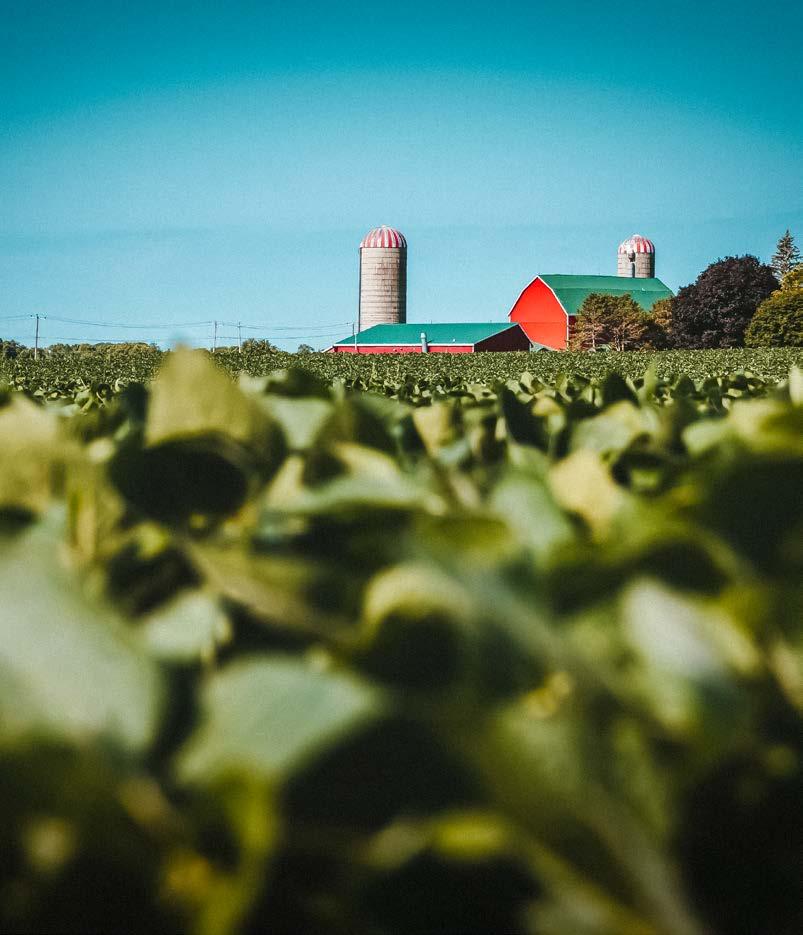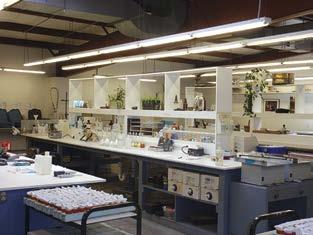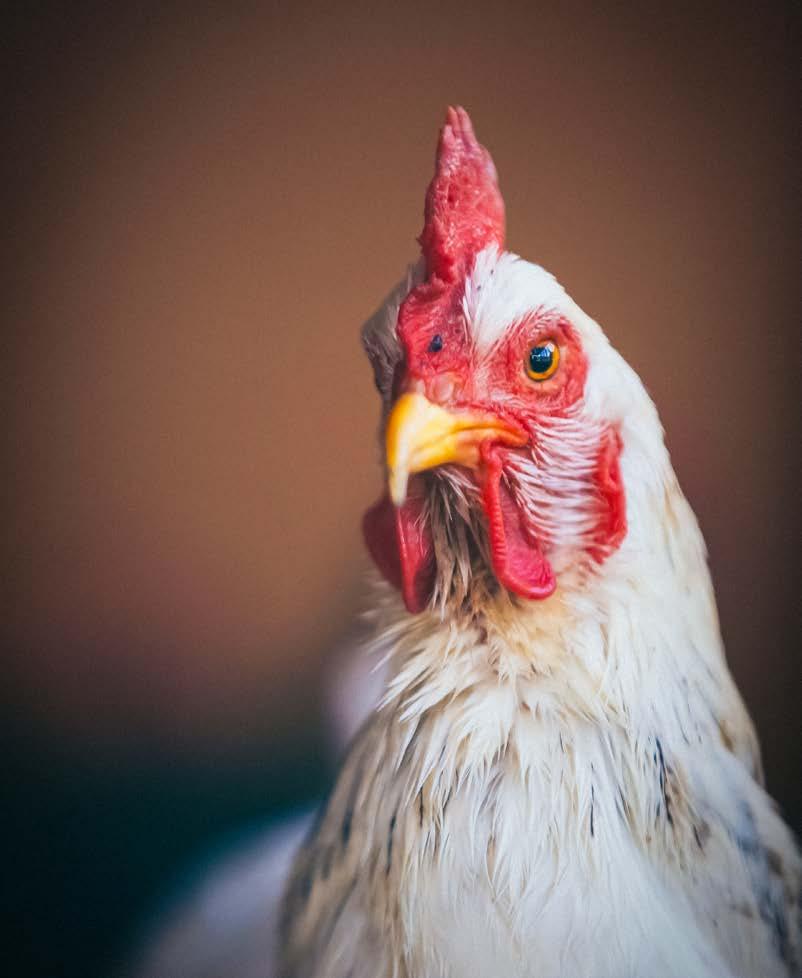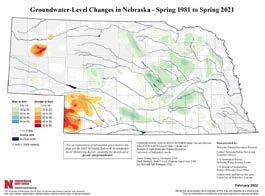
















a Ritz Family Publication
President/CEO
Michael Ritz – mikeritz@ritzfamilypublishing.com
General Manager
Brenda Stoner – brenda@ritzfamilypublishing.com
Office Assistant
Kyle Heisey – kyle@ritzfamilypublishing.com
Sales
Kevin Davis – kevin@farmranchdairy.com
Pat Drury – pat@ritzfamilypublishing.com
Corporate Office
Ritz Family Publishing, Inc.
714 N Main Street
Meridian, ID 83642
www.ritzfamilypublishing.com
Sales
For all sales inquiries, call toll free 1-800-330-3482 or 1-208-955-0124
info@ritzfamilypublishing.com
Subscriptions
For a subscription or to change your mailing address, call toll free: 1-800-330-3482 or 1-208-955-0124
info@ritzfamilypublishing.com
effort has been made to ensure accuracy of this
however, the publisher does not assume responsibility for omissions or typographical errors. The publisher does not assume responsibility or is liable for the contents of any advertising herein. Publisher’s liability for errors in an advertisement is limited to a correct insertion in the next publication. In the event of a misprint, the publisher must be informed of such error prior to printing of the next publication.


In 1970, there were no commercial soil and plant testing laboratories in Idaho. Farmers applied fertilizers based upon educated guesswork. Dr. Dale Stukenholtz and his wife Joyce saw an opportunity to build a business and started a soil and plant testing laboratory and field consulting service based in Twin Falls, Idaho. Dr. Stukenholtz had an unusually diverse background as an educator at the University of Nebraska, an agronomist in the fertilizer industry, and a farmer, and he saw a need for more modern fertilizer recommendations to produce greater yields at less cost. His clients were the growers, so he could make unbiased recommendations that maximized economic return to the farmer. After extensive field research, he developed these improved fertilizer recommendations that quickly became popular with growers and form the basis for nearly all fertilizer applications in the intermountain west area. Stukenholtz Laboratory clients include growers from all neighboring states and several foreign countries including Australia, Canada, Egypt, Russia, Mexico and New Zealand.
Stukenholtz Laboratory provides 1 to 2 day service, including picking up and delivery time, across Southern Idaho from St. Anthony and Grace to Parma and Homedale. Results can be delivered, mailed, faxed, or pulled from the Laboratory’s webpage: www.stukenholtz.com. To improve their service, Joyce and Dale Stukenholtz expanded the laboratory 26 years ago, installed the latest in computerized instrumentation and quality control, and made it the most modern and well equipped agricultural laboratory in their market area.
Critical to the success of Idaho’s most efficient laboratory and largest field consulting firm has been its personnel. Dr. Stukenholtz has had a PhD in Soil Fertility and Plant Nutrition since 1964 and his son and Laboratory Manager

Paul has nearly completed his own. Consulting agronomists include J.P. Kruckeberg of American Falls, a 44 year veteran of field consulting and the most successful single agronomist in the state, and Bart Kunz. The Laboratory and office staff are equally good.
Stukenholtz Laboratory continues with research and improvement. In conjunction with the Idaho Crop Production Association and University of Idaho CFEP research project, Stukenholtz Laboratory has helped to ensure that fertilizer recommendations in Idaho are the most cost efficient possible and produce the maximum economic yield while protecting the environment. Stukenholtz Laboratory personnel have conducted field research on over 40 different products and continue to be the experts at “cutting edge” agricultural technology. As we end our first 50 years of business and begin our next, we would like to thank our current and former employees for their dedicated work and our customers and clients for their years of support.
Since the onset of 2020, fertilizer prices have been exploding. But now, simply the availability in addition to evermore outrageous cost of fertilizer due to a variety of well-publicized reasons has become very seriously problematic. Presently, there seems to be no ceiling to cost escalation or foreseeable end to limitations on supplies. This means that every pound or gallon of fertilizer applied must be utilized by the crop to the greatest extent possible.
About “Precision Farming”: This term has implied mechanical means of precise seed and fertilizer placement, variable-rate fertilizer applications based on grid soil sampling and nearinfrared ærial surveys, metered applications of fertilizers through irrigation systems and GPS guidance of tractors and sprayers. But realistically, these approaches address only a modest part of achieving maximum crop performance with the most efficient use of money and resources. Whether or not precision mechanical means are used, here some of the most important considerations when attempting to get the most out of the least:
• “Traditional” practices have got to go! Here are the biggest mistakes I’ve seen farmers make over and over again during my 30-plus years with TPS Lab:
• The major application of fertilizer being made at the start of the growing season, expecting it to suffice for the entire season.
• The wrong fertilizer for the soil type or crop.
• Not keeping up with the latest advances and discoveries in crop nutrition.
• Not using bio-stimulants to improve crop performance and its resistance to disease and insects.
• Ignoring existing soil nutrients which are plantunavailable, especially in calcareous, high-pH soils.
• Ignoring irrigation and spray water quality.
• Ignoring soil health/life.
• Not planning beyond this year’s crop using the “Regenerative Agriculture” approach.
• The key issues in efficient crop production are:
• Timing and placement of fertilizer applications.
• The correct fertilizer for your soil type, the crop and its stage of development.
• Acceptable irrigation and spray water quality.
• The use of biological inoculants and bio-stimulants, such as amino acids, growth hormones and other beneficial products that may not be essential for plant growth.
Timing and Placement of Fertilizer Applications Is Crucial
– Many farmers apply the bulk of their fertilizers at the onset of the season. This is colossally wasteful, as plants develop their appetites and tastes with growth, much of the fertilizer has been dissipated by the time the plants start needing it the most. This is particularly true with N. Remember that crop nutritional needs change throughout the growing season, so applying the wrong fertilizer at the wrong time for your particular crop wastes much of your money. As to placement, with row crops, side-dressing can require much less fertilizer and starter “pop-up” fertilizer is astonishingly effective in getting crops off to fast vigorous starts. After emergence, the use of foliar sprays is the most efficient method of getting nutrients into plants.
About Foliar Sprays – In some areas of the country, particularly the Corn Belt, foliar sprays of plant-beneficial and nutritional agents are typically seldom used, as this area of the country has been historically known as having the highest-producing capacity of corn and soybeans per acre. Unfortunately, the Midwest’s rich soil nutrient pool is declining due to reduction of soil organic matter (soil carbon) much like
the rest of the country. This leads to nutrient deficiencies, especially micronutrients, that limit plant genetic potential resulting in reduced yields and quality. As a result, increased disease and insect pressure increases input costs of additional fungicides and pesticides which reduces return on investment. Here, foliar sprays of bio-stimulants, micronutrients and trace elements can have big, faster and longer-term impacts on crop health, performance and economics.
Type of Fertilizer – Here is where a Soil Test is really important! If you have calcareous soils and buy micronutrients in the oxide form, you have literally thrown money on the ground with no benefit at all. When it comes to nitrogen, there can be a huge difference between anhydrous ammonia, urea, ammonium nitrate and ammonium sulfate as to its longevity, its utilization by the plant and its impact on native soil chemistry and soil life. Is it nitrate nitrogen, ammonia nitrogen or organic nitrogen? The forms of other nutrients are equally important – for example, MAP or DAP? Choosing the best fertilizer for your specific soil conditions or foliar fertilizer for specific stage of growth can save huge amount of money and increase ROI. This is the reason why some have not seen much success from the use of foliar sprays. The wrong product, mixing incompatible or antagonistic products together, wrong application rates, missing critical stages of growth and inadequate water quality are quite common mistakes.
Plant Sap Tests at critical stages of crop development during the season are crucial to determining the nutritional needs of the crop so that no more than necessary of what is applied, thus saving money and limited supplies. Plants eat and drink every day and their tastes and appetites change with time. Those changing needs (but no more than needs) must be accommodated to have some assurance of a profitable outcome.
Advances and Discoveries in crop nutrition and health are being made all the time – particularly in the chelated forms of micronutrients, resulting in a much higher efficiency of plant uptake and utilization. This means using less to produce more. A fairly recent discovery is foliarly-applied water-soluble silicon. Si stiffens and hardens cell walls, thereby discouraging piercing and gnawing insects and resist disease – and lodging. Si forms a very thin hard layer that resists nematodes and soil pathogens on roots. A very recent tool is nanoparticles that encapsulates the inputs you already use into tiny nanoparticles that glide through foliar and root barriers, thereby improving efficiency and speed of uptake and reducing the energy required by the plant to get nutrients into its cells.
Bio-Stimulants – There is more to crop health and nutrition than just chemistry. These game-changers include organic acids, growth hormones and biological inoculants that can dramatically improve crop performance, nutrient uptake efficiency and resistance to disease and insects - thus reducing or eliminating entirely the need for costly pesticides and fungicides. Encourage the plants, microbes and other soil life to do much of the heavy lifting!
Already Existing Soil Nutrients – Particularly in calcareous soils, many of the metal nutrients exist as carbonate and bicarbonate chemical compounds often in abundance – all very insoluble and therefore unavailable to plants. The standard soil treatment is sulfur but the latest method also includes the use of bio-stimulants. These break the chemical bond by chelating the nutrients into bioavailable forms. Humic/Fulvic Acids, Amino Acids, Enzymes and beneficial soil bacteria from additions of soil inoculants all play a vital role to access this nutrient pool. Additions of these bio-stimulants to your existing fertility program can increase your fertilizer efficiency by more than 20% in most cases, allowing you to cut back on fertilizer in times of high cost and limited availability, and have long-term cumulative benefits.
Water Quality Test – Irrigating with hard or salty water can have dramatic impacts on soil chemistry and structure, because What’s In Your Water Becomes Part Of Your Soil ®. As aquifer levels fall, natural dissolved minerals become more concentrated. There are several methods to remediate soil. Using hard water for the spray mix can change the chemistries of spray agents to the extent of making them ineffective and possibly damaging plants. Appropriate water treatment is needed to offset or remediate these problems.
Regenerative Agriculture – Planning beyond this year to reduce costs and increase crop performance by regenerating soil structure and health/life, thereby increasing long-term nutrient availability and carbon sequestration, reducing future costs and resources. Reduction of soil disturbance and continuous vegetation cover on soil as much as possible increases the amount of diversity of organic residues to maximize nutrient and water use efficiency by plants. Restoring overall microbial life is essential to soil/plant health and biodiversity. This sustainable approach is a long road to travel but it must be initiated if farmers want to be successful over prolonged challenging times.
Bottom Line – Maintaining balanced nutrition and vigorous soil life at every stage of your plants’ life cycle will ensure that no matter what challenge Mother Nature sends, your crops will have the best chance of making you money. Soil, Water and Sap Testing is one of the best investments a grower can make, especially during these times of uncertainty with exorbitant fertilizer prices so you can apply only what your crop needs, where it needs it and when it needs it!
Don’t guess and hope for the best!

Cultivators today are faced with a range of challenges — climate change, compliance and licensing, speed to market, and limitation of space. However, Box4Grow modernizes the growing process through a proven turnkey solution for cultivators looking to streamline their start-up process and overcome these challenges.
Box4Grow’s rapid-to-deploy modular grow solutions provide cultivators with a significantly higher yield in a shorter time compared to all conventional production methods. With a grow room, you have complete control over the growing environment, including temperature, humidity, and lighting. This allows you to create optimal growing conditions for your crops, regardless of the weather outside. Extreme temperatures, droughts,

and other weather events can have a significant impact on crop yields and quality. With a grow room, you can avoid these risks and produce crops consistently throughout the year.
In addition, unlike greenhouse operations, Box4Grow’s grow rooms offer a closed environment that prevents contamination from pests and diseases. This reduces the need for pesticides and other chemicals, resulting in a safer growing environment that produces healthier, higher quality crops.
Box4Grow’s grow rooms are available in sizes ranging from 10 feet to 40 feet to fit unique budget and space requirements. And with a time to value measured in just 12 weeks, these turnkey facilities offer the fastest and most efficient way to launch or expand an operation.
The flat-pack option allows for quick assembly and the modular grow boxes can be easily expanded by interlocking and removing panels. Box4Grow determines the optimum environment for the crop and then develops a unique state-of-the-art growing solution in a modular panelized box.
Box4Grow’s Micro/Leafy Green Configuration offers a fully-automated, turnkey vertical grow setup for high-yield, which can be used for a number of micro and leafy greens and herbs. The setup includes prep tables, multi-level grow racks or vertical tower set-ups for multiple crops, LED lighting, fully automated remote monitoring, full insulation, hydroponics with NFT options, a 240V system, and HVAC and humidification.
Box4Grow’s turnkey grow facilities provide the ultimate solution for cultivators, offering sustainability, scalability, and a quick time-tovalue. With a focus on providing optimal growing environments and precise control of lighting and temperature, Box4Grow’s solutions are designed to help cultivators achieve success in the challenging and competitive world of horticulture. Learn more at www.box4grow.com.
INSECTO is a natural food grade diatomaceous earth powder designed and registered by US EPA with an OMRI designation to control:
1. Stored grain pests such as rice weevils for RICE FARMERS
2. Granary weevils for STORED GRAIN BINS
3. Darkling beetles and lice in POULTRY HOUSES.
4. Ants, bed bugs, fleas for HOME USE. Economic to use – a little goes a long way! It is effective until in contact with water, rain, etc. It is available in 4 lb. bags for home use or 25 lb. bags for commercial/ industrial use. Please contact us at (800) 332-2002 or find our product through the following suggested distributors:
WINFIELD SOLUTIONS, HELENA AGRI, NUTRIEN AG, WILBUR ELLIS, SIMPLOT, PERDUE, ECOLAB PEST, ARCHER DANIEL MIDLAND, and others throughout the U.S.
NATURAL INSECTO PRODUCTS
INC. Our website: www.insecto.com. (800) 332-2002 .




In his previous career, before becoming a manufacturer, Bob Lutz was a cattle farmer. As such, he was always looking for ways to save time and money and make life a little easier. Since he was running a rotational grazing system to conserve his pastures, he was spending a lot of time moving feed bunks. Thus the dream of the time and labor saving mobile feed bunk system came into existence.
In order for this system to work properly, a special steering mechanism was necessary to cope with the hilly terrain here in northern Missouri. Bob kept experimenting until he came up with the correct formula and put it into action for his own use. He then applied for and was granted a patent on the steering system.
The high quality construction of the Feed Train® mobile bunk led to requests for stationary bunks of the same quality and those were added to the product line. Next we were receiving customer requests for creep feeders and these were designed so that no tools are required for set up, thus avoiding the “lost screwdriver syndrome.”
Customer requests for bulk bin storage followed and two sizes in portable bulk bins were developed – a 1.5-ton bin and a 3-ton bin. These sizes are also available as stationary units as well as a 5-ton bin. These bulk bin products are also used as seed tenders. And since most cattle farmers now use ATV or UTV units in their operations, we have created u nits for feeding from the seat of your vehicle.
Pull-behind units come in 500- and 1000-pound capacity. And the UTV unit that sits in the back of the vehicle holds 600 pounds. Scales are available for any of these units.
Take a look at our website at www.FeedTrain.com or call us at 888-592-2351 for additional information or to find a dealer near you.












Nebraska is awash with water. We have extensive aquifer systems under the entire state and more than 80,000 miles of rivers and streams, which is the most miles of rivers and streams of any state in the lower U.S.!
Water is the lifeblood of agriculture and Nebraska is in a blessed position. We have plentiful water for irrigation, in fact Nebraska is the number one state in the U.S. for irrigated acres and our Midwest location means that we get good rainfall. Put that all together and our agriculture system is rainfed with irrigation to supplement dryer times.
In livestock production, especially dairy, having high quality and consistent feedstuffs is critical to consistent output. With our rainfed+irrigated cropping system Nebraska farmers produce high quality feed at a consistent level year after year.
The state of Nebraska overlays the High Plains or Ogallala Aquifer. While much of the national news about the High Plains aquifer has been very negative it is not the whole story. The Nebraska part of the story is that the Nebraska aquifer remains at basically the same level as when irrigation began in the 1950s. That is an incredible feat, one that is

unmatched by any of the states that we share the High Plains aquifer with. Our goal with the Nebraska share of the aquifer is long term sustainability.
The management of Nebraska’s aquifers is delegated to our local Natural Resource Districts (NRDs) to ensure the water is used in a manner that is sustainable. The NRDs are continuously monitoring groundwater levels and making policy recommendations that ensure we have water for irrigation but also ensures the long-term viability of the aquifers. The NRDs take a long view of the ups and downs of the water level which allows pumping more water on dry years which is balanced by less pumping on wet years. This system of governance, which is by locally elected boards, is very flexible for the benefit of agricultural production.
In Nebraska we value our Good Life. We know that the sustainability of our state is tied to the sustainability of the Nebraska Aquifer. As the dairy industry grows in Nebraska, we have the feed, the people, and the water to make new dairy growth a success now and far into the future.
















 Image by Lee & Laura Howell
Image by Lee & Laura Howell
3 – 4 – 3
41% L-Amino Acids
+Chitosan For Maximum Stress Immunity.


4 – 2 – 3
38% L-Amino Acids
Give Crops Extra Energy.
● Plant-Derived for Super-Efficient Plant Availability means much less is needed than other fertilizers because much higher percentages of nutrients get into plants with faster uptake.
● Plant Safe. Will not burn plants, even if used undiluted.
● Highest Percentages of L-Amino Acids for stress relief and disease prevention.
- Compare with other brands -
● 100% Water Soluble. Will not clog drip emitters or precipitate in lines.
9 – 0 – 0
35% L-Amino Acids
Safe for foliar application.
● Boosts Microbial Biomass and Soil Nutrients Availability. Foliar Spray To Complex Minerals, Nutrients and Hormones.
